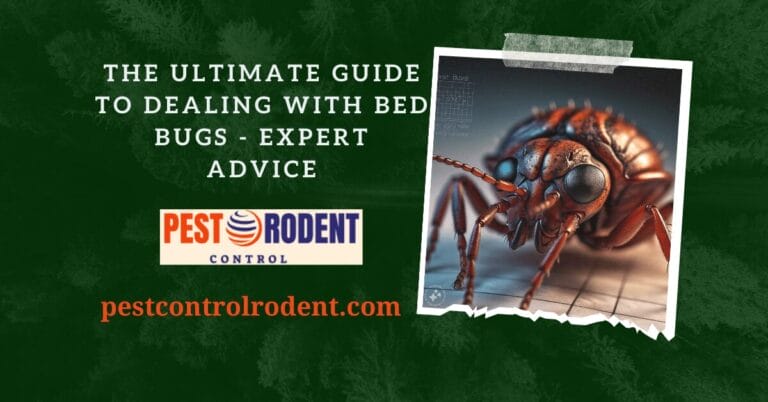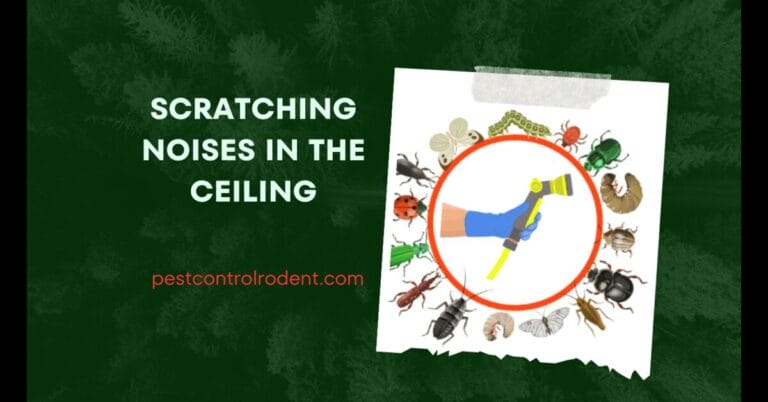Is a Termite Bond a Waste of Money? Discover the Remarkable Truth Now!

Is a Termite Bond a Waste of Money? Discover the Remarkable Truth Now!
Introduction
Termite infestation can cause significant damage to homes, leading homeowners to seek effective solutions for prevention and control. One option that often comes up is a termite bond. But what exactly is a termite bond, and is it worth the investment? In this blog post, we will delve into the world of termite bonds and evaluate their efficacy. We will explore the benefits, drawbacks, real-life experiences, and expert opinions to help you make an informed decision about whether a termite bond is the right choice for your home.

Understanding Termite Bonds
What is a Termite Bond?
A termite bond is a contract between a homeowner and a pest control company, providing coverage for termite damage and ongoing prevention and control measures. The bond aims to protect homeowners from costly repairs due to termite infestation.
Definition and Purpose
Termite bonds, also known as termite warranties or termite insurance, offer financial protection by covering the cost of termite damage repairs. Additionally, they typically include regular inspections and treatments to prevent future infestations.
How Termite Bonds Work
When homeowners enter into a termite bond, they pay a fee to the pest control company for an initial inspection, treatment (if necessary), and ongoing termite control services. The bond is usually renewable annually and may include a guarantee against future termite damage.
Limitations and Exclusions
It’s important to note that termite bonds often come with limitations and exclusions. For example, they may not cover pre-existing termite damage or certain types of structures like fences or detached sheds. It’s crucial to review the terms and conditions of the bond to fully understand its coverage.

Evaluating the Need for Termite Protection
Termite infestation risks vary depending on the geographic location and environmental factors. Assessing the need for termite protection is a crucial step in determining if a termite bond is worth the investment.
Geographic Factors and Termite Infestation Risks
Certain regions are more prone to termite infestations due to their climate and soil conditions. It’s important to research and understand the likelihood of termite activity in your area before deciding on termite protection measures.
Identifying Signs of Termite Infestation
Knowing the signs of termite infestation is essential for early detection and prevention. Common signs include mud tubes, discarded wings, and hollow-sounding walls. Regular inspections by professionals can help identify termite activity.
Considering Alternative Pest Control Methods
In addition to termite bonds, there are alternative methods for termite prevention and control. These include liquid termiticides, bait systems, and natural remedies. It’s worth exploring these options and comparing their efficacy and cost to make an informed decision.
The Role of Professional Pest Control Companies
Professional pest control companies play a vital role in providing effective termite control. When considering a termite bond, it’s important to assess the reputation, reliability, and pricing of different providers.

Benefits of Hiring Experts for Termite Control
Expertise is a key advantage when dealing with termite infestations. Pest control companies employ knowledgeable professionals who are trained in termite detection, treatment, and prevention. Their expertise ensures thorough inspections, effective treatments, and long-term termite control.
Assessing the Reputation and Reliability of Providers
Before committing to a termite bond, it’s crucial to research and evaluate the reputation and reliability of pest control companies. Reading customer reviews, seeking recommendations, and verifying their licensing and certifications can help ensure you choose a reputable service provider.
Comparing Service Packages and Pricing
Different pest control companies offer varying termite bond packages and pricing structures. It’s essential to compare these options to determine which one aligns with your specific needs and budget. Consider the frequency of inspections, treatments, and additional services offered in each package.
Pros and Cons of Termite Bonds
Termite bonds come with both advantages and disadvantages. Let’s take a closer look at what they offer and the criticisms associated with them.
Advantages of Termite Bonds
Financial Protection Against Termite Damage
One of the primary benefits of a termite bond is the financial protection it provides. In the event of termite damage, the bond covers the cost of repairs, saving homeowners from potentially significant expenses. This peace of mind is invaluable, especially considering the destructive capabilities of termites.
Peace of Mind and Convenience
Termite bonds offer peace of mind by providing regular inspections and treatments to prevent termite infestations. Homeowners can rely on the expertise of pest control companies, knowing that their property is being monitored and protected against termites. This convenience eliminates the need for homeowners to stay updated on termite control measures themselves.
Potential Discounts and Additional Services
Some termite bonds may include additional benefits such as discounts on other pest control services or complementary treatments for other pests. These added perks can enhance the overall value of the termite bond and make it a more attractive investment.

Disadvantages and Criticisms
Potential High Costs and Renewal Fees
Termite bonds, especially comprehensive ones, can come with high upfront costs and annual renewal fees. These costs may deter some homeowners from investing in termite bonds, especially if they have a limited budget or live in an area with low termite activity.
Limited Coverage and Excessive Exclusions
It’s important to carefully review the terms of a termite bond, as some may have limited coverage or excessive exclusions. Not all types of termite damage or structures may qualify for coverage. Homeowners should ensure they fully understand the limitations and exclusions before committing to a termite bond.
Overreliance on Chemical-Based Treatments
Termite bonds often heavily rely on chemical-based treatments for termite control. While effective, this approach may raise concerns for homeowners who prioritize sustainable and environmentally-friendly pest control methods. It’s worth considering the potential environmental implications and exploring alternative treatments.
Case Studies: Real-Life Experiences
To get a better understanding of the real-life efficacy of termite bonds, it’s valuable to explore both positive experiences and negative experiences.
Positive Experiences with Termite Bonds
Many homeowners have had positive experiences with termite bonds, where the bond provided financial protection and peace of mind. Through regular inspections, termite activity was detected early, preventing extensive damage and resulting in timely treatment.
Negative Experiences and Dissatisfaction
On the other hand, there are instances where homeowners have expressed dissatisfaction with termite bonds. Some have encountered issues with claim reimbursements, delays in inspections or treatments, or felt that the bond did not live up to its promised protection.
Common Complaints and Consumer Rights
Common complaints surrounding termite bonds include disputes over coverage, unsatisfactory treatment outcomes, and dissatisfaction with customer service. It’s important for homeowners to understand their rights, including processes for filing complaints and seeking resolution.

Weighing the Cost vs. Benefit
To make an informed decision about whether a termite bond is worth the investment, it’s necessary to evaluate both the financial implications and the overall effectiveness of termite bonds compared to alternative methods.
Evaluating the Long-Term Financial Implications
Calculating Potential Termite Damage Expenses
Consider the potential costs of termite damage that could arise without a termite bond. This includes structural repairs, furniture replacements, and associated expenses. Comparing these potential costs with the cost of a termite bond can help determine its financial benefits.
Comparing Termite Bond Costs and Savings
Evaluate the costs of termite bonds from different providers, considering both upfront fees and annual renewal fees. Compare these costs to potential savings in terms of avoided termite damage expenses. This assessment can provide a clearer picture of the long-term cost-effectiveness of a termite bond.
Considering Homeowner’s Insurance Coverage
Review the terms of your homeowner’s insurance policy to understand the coverage it provides for termite damage. Some policies may include exclusions or limitations. Assess the additional protection offered by a termite bond in relation to your existing insurance coverage.
Assessing Overall Effectiveness
Analyzing the Success Rate of Termite Bonds
Research the success rate of termite bonds by examining industry data and consumer experiences. Look for studies or reports documenting the effectiveness of termite bonds and whether they statistically reduce the likelihood of termite damage.
Alternative Termite Prevention Methods
Compare the efficacy and costs of alternative termite prevention methods, such as liquid termiticides or bait systems. This assessment can help determine if termite bonds offer a more comprehensive and effective solution or if alternatives are worth considering.
Environmental Implications and Sustainability
Consider the environmental impact of different termite control methods, including the chemical treatments often associated with termite bonds. If sustainability is a priority, explore alternatives that prioritize environmentally-friendly pest control approaches.
Expert Opinions and Industry Insights
Gaining insights from experts and industry associations can offer valuable perspectives on the efficacy of termite bonds and inform decision-making.
Input from Pest Control Associations
Consult reputable pest control associations for insights and recommendations on termite bonds. These associations often conduct research and provide guidelines for homeowners seeking termite control solutions.
Opinions from Homeowners and Real Estate Experts
Seek opinions and experiences from homeowners who have opted for termite bonds and real estate experts who deal with termite issues regularly. Their firsthand experiences and insights can provide practical and relatable perspectives.
Consumer Surveys and Public Sentiment
Review consumer surveys and public sentiment termite bonds. This will help gauge the general perception and satisfaction levels of who have chosen termite bonds and may shed light on any prevalent issues or.
Conclusion
After examining the various aspects of termite bonds, it’s time to draw a conclusion whether they are worth the investment. The answer ultimately depends on your individual circumstances, risk tolerance and environmental considerations.
Considering the financial protection, convenience, and potential discounts offered by termite bonds, they can be a wise investment for homeowners in regions with high termite activity and susceptibility. However, it’s essential to carefully review the terms and costs of termite bonds, taking into account their limitations and potential environmental implications.
By calculating the potential financial implications, assessing the overall effectiveness, and considering expert opinions and consumer experiences, you can make an informed choice for termite control that aligns with your needs and values.
FAQs
- What does a termite bond typically cover?
- A termite bond typically covers the cost of termite damage repairs and may include regular inspections and treatments for ongoing termite control.
- Are there any alternatives to termite bonds?
- Yes, alternatives to termite bonds include liquid termiticides, bait systems, and natural remedies. These alternatives should be evaluated for their efficacy and cost.
- Should I consider a termite bond if I live in an area with low termite activity?
- The need for a termite bond may be lower in areas with low termite activity. However, understanding the level of risk and potential costs of termite damage can help inform your decision.
- Can I transfer my termite bond to a new homeowner if I sell my house?
- Termite bond transferability depends on the terms of the specific bond and the policies of the pest control company. Some bonds are transferable, while others may not be.
- How often should termite inspections be conducted?
- The frequency of termite inspections varies depending on factors such as the region and the history of termite activity in the area. Annual inspections are common, but more frequent inspections may be necessary in high-risk areas.






